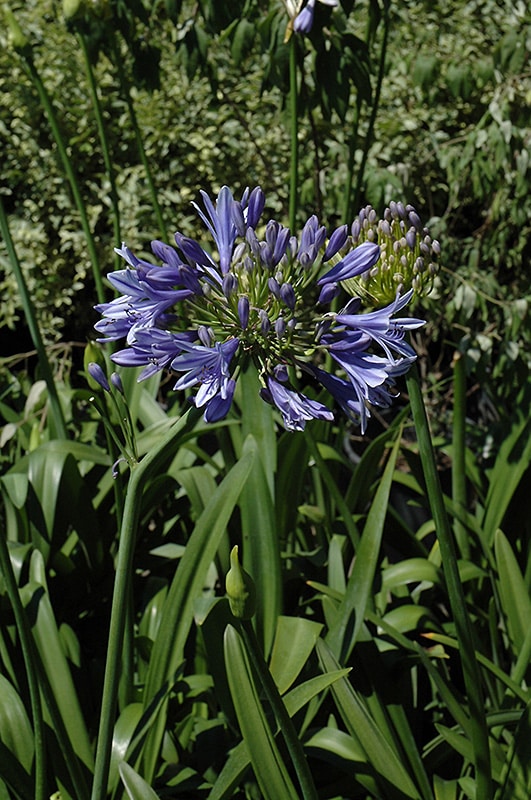Typical Agapanthus Troubles and How to Fix Them
Typical Agapanthus Troubles and How to Fix Them
Blog Article
Releasing the Secret to Effective Agapanthus Growing: Tips and Tricks for a Flourishing Garden
In the realm of gardening, growing agapanthus successfully requires a strategic method that incorporates various facets of plant treatment. By recognizing the nuances of agapanthus growing, one can create a setting where these plants prosper and grow generously.
Planting Agapanthus: Best Practices
When growing Agapanthus, proper dirt preparation is necessary for making sure successful growth and development of these lovely blossoms. Agapanthus, generally recognized as Lily of the Nile or African lily, flourishes in well-draining soil with a somewhat acidic to neutral pH degree - Agapanthus. Before planting, it is crucial to change heavy clay soils with organic issue such as compost or peat moss to boost water drainage and supply vital nutrients for the plants
To grow Agapanthus, choose a place that gets full sunshine to partial shade, as this will advertise healthy growth and plentiful blooming. Dig an opening two times the diameter of the plant's origin ball and put the Agapanthus at the very same depth it was previously growing. Delicately backfill the hole with soil, pushing down firmly to eliminate any air pockets around the roots.
Water the freshly grown Agapanthus thoroughly and remain to keep the soil equally wet, specifically throughout the plant's active growing season. Agapanthus. Using a well balanced fertilizer once a month can additionally support the plant's growth and blooming. By following these ideal methods for growing Agapanthus, you can develop a magnificent display screen of these captivating blossoms in your yard
Perfect Soil Issues for Agapanthus
For optimum growth and growing success of Agapanthus plants, guaranteeing the soil problems are optimal is important. Agapanthus grows in well-draining soil with a somewhat acidic to neutral pH level ranging from 6.0 to 7.0. This sort of dirt allows for sufficient water drain, preventing waterlogging which can result in root rot. To boost dirt drainage, take into consideration including raw material such as compost or peat moss when preparing the growing site. Furthermore, Agapanthus favors soil that is rich in nutrients, so integrating a well balanced plant food throughout the expanding season can promote healthy and balanced development and lively blossoms.

Watering and Fertilizing Tips
To guarantee healthy growth and vivid blossoms, proper watering and fertilizing methods are crucial for effective Agapanthus cultivation. Agapanthus plants profit from regular watering, specifically throughout the growing season.
When it involves feeding Agapanthus, a well balanced fertilizer with equivalent parts nitrogen, phosphorus, and potassium can be applied in the springtime to advertise healthy and balanced development and flowering. Slow-release plant foods are optimal for providing nutrients slowly over an extended period. Prevent over-fertilizing, as this can result in extreme vegetation development at the expenditure of blossoms.
Additionally, incorporating raw material like garden compost into the soil can improve nutrient degrees and boost dirt structure, assisting in the total health of the Agapanthus plants. By following these watering and feeding tips, garden enthusiasts can ensure their Agapanthus plants thrive and create magnificent displays of blossoms.
Trimming and Deadheading Strategies
Correct trimming and deadheading methods play an important role in maintaining the health and aesthetic appeals of Agapanthus plants, matching the vital methods of watering and feeding for effective cultivation. Trimming Agapanthus entails eliminating invested blossom heads, dead or yellowing fallen leaves, and total shaping of the plant to promote better growth. Deadheading, the process of eliminating faded blossoms, not discover this info here only improves you can try here the plant's look but also motivates further growing.
When deadheading Agapanthus, it is a good idea to trim off the blossom stem at the base making use of sharp, tidy shears. This procedure reroutes the plant's power from seed production back into root and vegetation development, advertising a healthier and much more durable plant. Normal deadheading can prolong the blooming duration of Agapanthus and prevent self-seeding, which can result in overcrowding.
In regards to pruning, Agapanthus typically gain from a light trim after blooming to clean the plant and encourage fresh development. Cutting down the invested blossom stems and removing any broken or dead vegetation helps keep the plant's vigor and overall look. Nevertheless, it is important to stay clear of reducing into the crown of the plant, as this can deteriorate its health.

Protecting Agapanthus From Pests and Diseases
Applying efficient pest and disease monitoring strategies is essential to guarding the wellness and vitality of Agapanthus plants in cultivation. One common bug that impacts Agapanthus is the Agapanthus borer, a caterpillar that tunnels into the plant, causing damages to the fallen leaves and flowers.
In addition to pests, Agapanthus are vulnerable to illness why not try this out such as root rot and fungal fallen leave places. By staying attentive and dealing with insect and condition issues immediately, gardeners can help their Agapanthus grow and prosper.
:strip_icc()/purple-agapanthus-4637b426-ba6babc24ea34dce9361ec746f6ebc63.jpg)
Final Thought
Finally, successful farming of agapanthus needs correct planting techniques, perfect dirt problems, appropriate watering and feeding, routine trimming and deadheading, and security from illness and pests. By following these methods and ideas, garden enthusiasts can ensure a growing yard loaded with lovely agapanthus blossoms. Agapanthus. Remember to preserve consistent treatment and focus to information to advertise the health and long life of these spectacular plants
When planting Agapanthus, correct soil prep work is vital for guaranteeing effective growth and development of these attractive blossoms.Water the recently grown Agapanthus thoroughly and continue to maintain the soil uniformly wet, especially during the plant's energetic growing period.For optimal growth and growing success of Agapanthus plants, ensuring the soil conditions are excellent is critical. When growing or transplanting Agapanthus, make sure the dirt is well-prepared to give the necessary foundation for the plants to establish themselves efficiently. One usual insect that influences Agapanthus is the Agapanthus borer, a caterpillar that passages right into the plant, creating damages to the flowers and fallen leaves.
Report this page